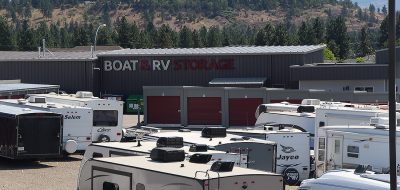 Having a flat tire on your automobile is one thing, having a flat on your RV is totally different. While both present a possible safety issue, the later, motorized or towed, can be a harrowing experience due to the weight and size. Additionally the cost can be substantially more in the case of an RV. Often, the shredding of a motor home tire while getting slowed and stopped, can cause severe body damage. Torn, or destroyed fenders and wheel wells can result. Of course the wheel itself and surrounding components may also suffer and require repair or replacement. These damages can cost thousands of dollars to correct, in addition to the replacement of the subject tire.
Having a flat tire on your automobile is one thing, having a flat on your RV is totally different. While both present a possible safety issue, the later, motorized or towed, can be a harrowing experience due to the weight and size. Additionally the cost can be substantially more in the case of an RV. Often, the shredding of a motor home tire while getting slowed and stopped, can cause severe body damage. Torn, or destroyed fenders and wheel wells can result. Of course the wheel itself and surrounding components may also suffer and require repair or replacement. These damages can cost thousands of dollars to correct, in addition to the replacement of the subject tire.
So how can you eliminate the possibility of having a tire blow out? Well, unfortunately you can’t. There is no way you can guarantee it will never happen, unless you want to get “Run Flats“, but, unfortunately, they are not available in the size and weight you need. But you may be able to substantially reduce the chances of this ever happening.
Industry experts agree that the majority of blow outs are the result of tires that are 20% or more under inflated. This under inflation is generally the result of either, operator not regularly maintaining the tire pressures or the development of a slow leak. Well, you could eliminate the maintenance issue by being more diligent with regular frequency. But, the slow leak is unpredictable. It could develop at anytime, right after you manually checked the tire pressures, while driving, after a short stop, etc. So, not even a person that checks their tire pressure every morning would necessarily avoid this potential tire failure.
However, if that person could check each tire’s pressure constantly, the pressure reduction leading up to a failure could be identified. This, and more, can be accomplished by the adding of a tire monitoring system. These systems monitor the tire pressure, and on some, also the tire’s internal temperature, in real time, ongoing. Not only can the operator check each tires individual’s air pressure at any time, but it is also pro-active, giving immediate warnings should the pressures or temperatures become abnormal.
There are a number of manufacturers that offer these devices such as Doran, PressurePro, SmarTire, TPMS, Tire-SafeGuard, to name a few. Most can be added to an existing vehicle without the need to remove the tires from the wheels. These employ sensors that screw onto the end of your current valve stems. They have an internal battery in each, which automatically switches the sensor on upon sensing the movement of the wheel. When left still for a short period of time, they automatically de-activate, conserving the battery. This type of sensor, however, can be subject to theft due to its ease to remove. Locking types and add-on locking devices are available to overcome this issue. The simple screw on sensors can also be added to your towed vehicle or trailer and still be monitored in addition to the motor home’s tires. The towed vehicle application also can be a lifesaver. Imagine how long it may be to discover that your towed vehicle has a flat tire. Substantial damage could happen prior to becoming aware of the problem. There are also units that use internal sensors. These require the removal of the tire from the rim to install or service. They are generally more expensive than their valve stem mounted cousins, but may offer a more accurate internal temperature data reading.
So, how often do you have to replace the batteries? In most cases you probably will never have to change them. That is, unless you keep your coach for seven years or so, which the average owner does not. The battery life ranges from 5 to 7 years based on normal operation. This timeframe coincides nicely with the average tire replacement frequency.
Do you currently have one of these monitoring systems on your rig, or are you considering adding one? If you never have a blow out, it will provide peace of mind. If you do, it may have save you a large insurance claim, a hefty deductable charge and a lot of aggravation. All of this with an increased safety margin may certainly be worth considering.
Next week – Run Flats for RV’s. Check it out on Sunday the 8th.
Watching Your Tires – Lug_Nut – Peter Mercer








John
Thank you all for sharing. It was great info for me. I’m now going to get one now.
Lug_Nut
Dan, Great product information and experience. Thank you for sharing this with us and for your input.
Lug_Nut
John, Glad you enjoyed the article. I fully agree that it sure beats checking the tires manually, and with a monitor it give you ongoing readings in real time. Thanks for your input on this.
DAN
RE THE TST SYSTEM:
the system transmits pressure and temperature 24-7, no tire rotation is required. if you remove the sensor from the wheel for storage, it quits transmitting, thus extending battery life. the transmitter batteries are supposed to last 5-7 years.
i used to run 100-105 psi before tst.
now i run 90-92 psi and i have my low pressure alarm set at 85 psi. the hi press alarm is set at 151 psi (the minimum) and the hi temp set at 158 degrees f (the minimum).
vandals are the main theft concern. the sensors would be useless to anyone who did not have the 4 digit alpha-numeric code for each sensor. the sensors cost $50 each to replace.
you must have metal valve stems. my stainless braided rear ib valve stem extensions work fine. they are supported by a clip.
it was necessary for my installation on a winnebago with 19.5 inch tires to install 4 haltec 90 degree valve stem extensions for clearance with the wheel liners.
for more info check out my entries on the irv2 forum. my log in is: DAN L
John
Hi Lug_Nut,
Great article! Definitley will have this invaluable technology on the new coach later this year. Haven’t had a chance to read your articles lately, been on the road to Phoenix. I think it’s a small price to pay for piece of mind. I like the units that are mounted inside the rim. Much easier than bending and trying to check the pressure in hard to reach spots and, the ability to moitor temps and psi.
Cheers,
John
Lug_Nut
Roger, Great info. Thanks for posting your experiences on this topic and for your input.
Roger
Tire valve info.
The normal “snap-in” rubber valves that were used on most cars prior to 2005 are rated for a MAX inflation of 65 psi by industry standards. These all have one of the following numbers molded in (on the inside of wheel so check before your tire store instals them. 412,413,414,425.418,423 and 425. These have a round base.
There are some special rubber body valves such as 600 HP, 602 HP, 801 HP and 802 HP that have a more square base. These are rated at 100 psi max.
There is no easy way to know which you have if the valves are already installed.
BUT
As you can see if your application calls for more than 65 psi and you have a rubber body valve then you might have an incorrect valve.
Re theft of external stem device. I doubt that there is a hot market for the stem add on monitors. The monitors are unique to the brand system so the only place to “fence” one would be to someone that needed only a sensor and could tell the brand system involved and was selling to another RV owner. Won’t say it can’t happen but lots more stuff of higher “fence” value than our tire valves.
I run a Hella system from Tire Rack. Temp & pressure. Internal mount ( I have tools to do the job myself) Down side is they are only good to 75 psi but my C-MH only needs 60 to meet load and I run 67 so I don’t exceed the rating.
Lug_Nut
Cliff, I don’t think there is any difference in leakage, as far as valve stems go, but you are correct, steel valve stems are really needed. One may be able to secure the rubber ones, but if it wiggles it will wear out quickly. I believe having your valve stems replaced with steel is quite reasonable. Thank you for the question and your input.
Lug_Nut
Paul, Thanks for the kind words. The Doran is a great system. The peace of mind is well worth the price. Thank you for your participation on this topic and your valued input.
Cliff Thew
as there is some mass to the “on stem” transmitters, one must have steel valve stems. I am sure all class A’s have these but many others such as 5th wheels and travel trailers do not. It is not expensive to have them added and they are much better at not losing pressure than the rubber type stems.
Paul
Peter,
Good article. Since I have installed the Doran 360 system, I feel more relaxed. I have heard many stories about people running a flat on their dingy and not being aware of it until someone told them or they had a major problem. I don’t check my pressure every time I stop, but I do check the temp with a digital themometer when I stop for fuel or lunch. It makes me feel beter.
Lug_Nut
Alpenliter, The PressurePro is probably the most popular monitoring system for RVer’s, and I can see why. I think once you have had a tire pressure monitor on a coach, it woulf be difficult to have one without. Thank you for sharing your experience and for the input.
Alpenliter
I have the Pressure Pros that I bought at the Rally in Bend, OR. The locks are available from the dealer and utilize 3 tiny set screws that are secured with a little allen wrench. I was very concerned about tire pressure and would crawl around on all fours checking the 4 tires on the 5er and the rear 4 of the dually. Now, I just plug my monitor into the cigarette lighter and read the pressures from my cab. If I have a low one, it signals me and tells me which one to air up before I leave. A great investment, considering the thousands of dollars of damage a blow out can cause.
Lug_Nut
DAN, Great feed back! Your system sounds like it is a real value. Thank you for sharing your experience with us, and for some great input.
Lug_Nut
Pete, I believe all of the sensors require wheel rotation to turn them on. This is the main way that they conserve energy, and, we are speaking about an RV. Rv’s, in general, have lengthy lay-ups. Thanks for your valued input.
DAN
I am using the TST TRUCK wireless pressure and temperature monitor system.
i don’t have many miles on them yet. so far they are working well. i like the constant digital readout of the temperature and pressure of each tire in sequence. i like the adjustable low and high pressure and adjustable high temperature alarms. the alarms consist of a red light on the panel and a very loud beeping that can be heard in the bedroom.
tst has an installation and removal tool that would make it difficult, not impossible, to remove the sensors without the tool. if you were inside the coach, you would hear the low pressure alarm if someone tried to steal a sensor.
the sensor just spins when you turn it without using the tool.
the 6 tire system cost me <$300 delivered
Pete
Do any of the external sensor type systems require tire rotation to turn ON ?
Do any of the external sensor type systems have a commonly used antenna connector (such as BNC, SMA) on the receiver display unit that allows a remote antenna to be used?
Lug_Nut
Nick, Thanks, you just answered one of the questions. Glad you loke the monitor. Thanks for your timely comment and your participation.
Lug_Nut
Ron, I believe locking devices are available from the monitor manufacturing companies. I would doubt that they are fool proof, but probably adequate. I guess too, that it would depend the area your coach is in. Thank you for your input, perhaps other readers may be able to offer more on the locks.
Nick Russell
We have the PressurePro system, which we got from Escapee vendors Mike and Pat McFall, and love it! I would not travel one mile without it.
No more crawling around in rthe wet morning grass (or mud) to check my tire pressures, I just turn the PressurePro on and go! And the PressurePro comes with special lock nuts to prevent theft. I know they work, because I misplaced the special angled wrench to get them off and had to repalce it before I could air up a tire!
Ron Thill
You mentioned locking devices to minimize theft of the external valve stem devices. Which companies offer these are they truely theft proof? The valve stem devices I’ve seen are large/easily recognizable, and at around $50 bucks a tire, would be very tempting to thieves. If there not theft proof, the best option would seem to be those devices installed inside the tires. Thoughts?
PS: Thanks for posting your article.